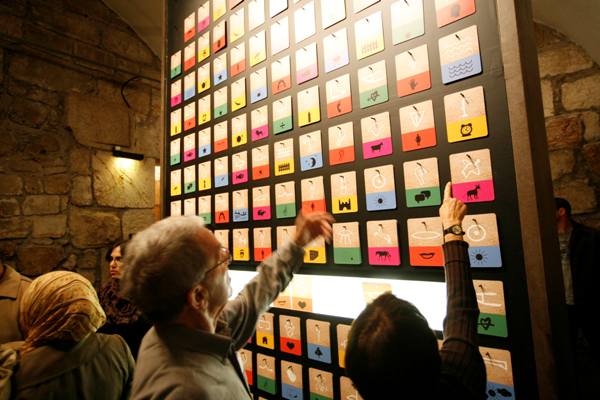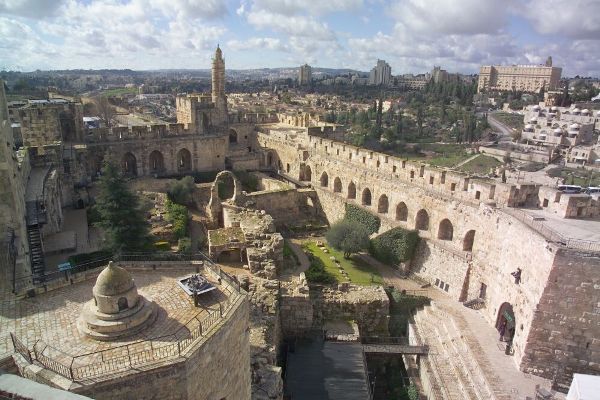
On any day in Jerusalem you are likely to hear Arabic, Hebrew, English, French, Russian and German – all the space of a few moments, as you walk through the streets of this city that is central to so many people, cultures, religions and languages. With so many languages, and means of communicating, both personal and global – television, internet, email, texting, cell phones, and ordinary conversation, it’s still a challenge to communicate and understand one another.
The Tower of David Museum of the History of Jerusalem is currently focusing on one important aspect of communication, with the exhibit “Letters & More” that traces the development of the written alphabet. The historic building, with archeological findings from almost every chapter in Jerusalem’s long and fascinating history, is the perfect setting for the exhibit, as writing first developed in this part of the globe. Agriculture and trade in the Fertile Crescent made it necessary to find a way to communicate with people beyond the close circle of everyday contact. The exhibit opens with an animated film that shows the first method used for this purpose (a box filled with objects that symbolized the intended message) and the inherent amusing possibilities for misinterpretation.
The colorful exhibit, imaginatively designed by Yael Tevet and Roy Roth, walks you through the history of written language, with activities at every step of the way. It’s an invitation to learn the history of writing and reflect on our changing use of language, with something to engage every age group and level of interest. Frustrated with the contemporary Babel of multiple languages, it is tempting to think that pictures are more universally communicative. A wall of colorful picture tiles is set up for an activity that can easily dispel this notion, as the challenge is to compose sentences using the tiles that the other members of your group try to decipher. Not as easy as one might think, but lots of fun.

Combining technology with a sense of local atmosphere, a small round platform topped with white sand is the screen on which images showing the way that individual letters have evolved over time in different languages. Photographs with writing from different periods, a map of language relationships and computer stands expand the possibilities for more in-depth exploration.
This year has been designated as the “Year of the Hebrew Language” in the schools and this exhibit makes a nice outing to complement the school curriculum. A school group was touring the exhibit on the day I visited, and the museum also conducts bilingual tours in Arabic and Hebrew for kindergarteners.
Just when you think you’ve understood so much about the history and significance of written language to the history of culture (for example, the ability to communicate abstract thought – try to convey something like “history” or “culture” in an image), the exhibit concludes with some very familiar images of computer icons, emoticons and other paraphernalia of our times – could be the start of a great post-exhibit discussion over coffee.

“Letters & More” is just one part of this museum, there is so much to explore. The building and grounds are a tour through history, the permanent exhibit brings that history to life in Arabic, English and Hebrew with contemporary museum methods, and the view of Jerusalem from the towers is breathtaking.
The museum is located at the Jaffa Gate entrance to the Old City of Jerusalem. Liat Margalit and Sara Rosenfeld are the Curators of the exhibition “Letters & More” and Renee Sivan is Chief Curator of the Tower of David Museum. The Tower of David Museum is open Sunday – Thursday from 10:00 – 16:00, and Saturday from 10:00 – 14:00. Further information in several languages, including English, is available on the website, or call: 02-6265333 (the museum office), or 24 hour information 02-6265310.





